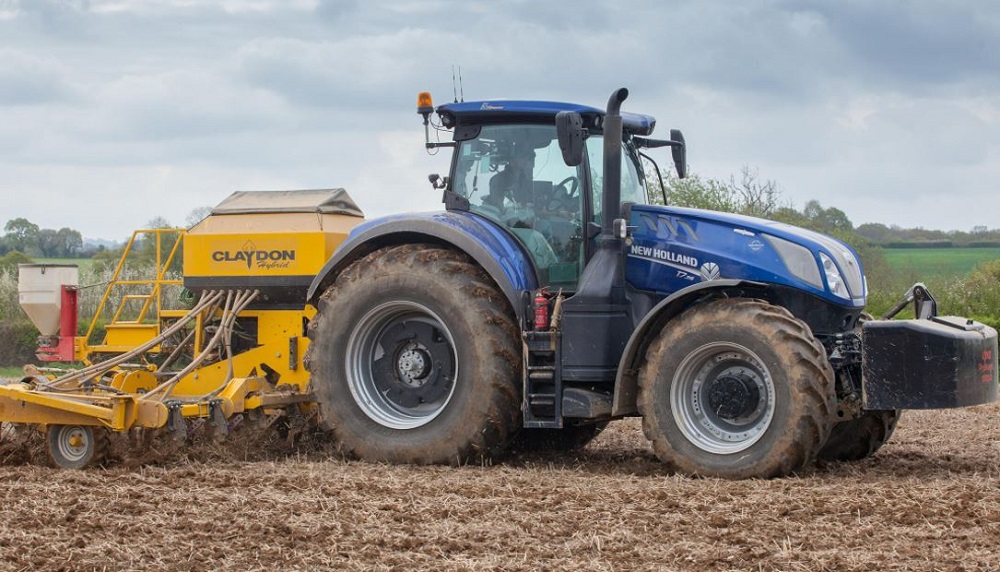- Home
- Knowledge library
- Strip tillage on arable land
Strip tillage on arable land
In soils with reduced self-structuring capabilities, strip tillage provides a stepping stone to direct drilling. By cultivating the strip that the crop grows in, this technique can save money, retain support for future passes and protect drainage channels.
Pros and cons of strip tillage
Pros
- Combines the soil-drying and warming benefits of conventional cultivations with the soil-protecting advantages of no-till
- Works on a proportion of the field, so overall soil movement is reduced
- Increases efficiency, while allowing tillage (as required)
- Retains undisturbed soil columns to support traffic and drainage
- Can be split into cultivation and drilling, in some cases, for flexibility
- Option to place fertiliser in drilling zone can save input costs
- Can provide a stepping stone to no-till or direct drilling
- Potential for companion cropping between strips
Cons
- Different surface conditions/residue levels can increase threats of slugs and carry-over of certain diseases
- Gives different surface conditions for weed and pest control measures
- Higher draft than shallow tillage (although less than full-width tillage)
- Requires care, such as limiting speeds, to avoid throwing disturbed soil on uncultivated strips
- Can be limited for deeper operation (e.g. in high-moisture situations)
- Higher levels of residues imply zone placement of fertiliser is needed
- Residue manager options can be required to give clear drilling zones
- Often reliant on rotations and/or chemicals for weed control
Considerations for effective strip tillage
- Row width tends to be wider
- Changes to inter-row spacing can affect grass weed competitiveness (consider if the number of plants per square metre is adequate)
- Specialised cultivation and drilling machines, which prepare and drill at different times or can be linked together, as needed
- Any deeper soil-structuring actions must be effective but not disruptive to natural soil structure
- Actions must produce subtle vertical fissures and not a full rearrangement of the profile
- Zone-placed fertiliser is an option if using appropriate tines in the strip cultivation units
Residue management
Consider the ability to move residues clear of the seeding zone or to rely on the capabilities of the drill to work into such zones.
Often, moving chopped and spread residues clear of the seeding zone is straightforward, given enough clearance between strip-tilled rows for residues to be moved into.
How residues affect cultivation and establishment for arable crops
 David Parker
David Parker
Number of operations
Timing of the tillage and drilling operations (crop and soil type/condition) determines whether one or two operations are needed.
Use two operations where:
- A spring-sown crop follows autumn strip tillage preparation
- Deeper tillage precedes drilling; this allows the deeper operation to be done earlier in potentially drier soil to maximise effectiveness
Use one operation where tillage and drilling are combined. Ensure deep loosening is effective, especially in damper conditions (particularly associated with later drilling).
Limiting sideways soil movement
Limiting sideways soil movement to the cultivated zones reduces the risk of volunteers or weed seeds being encouraged inter-row, and it makes following rolling operations more effective in the seeded zones.
You can manage such disturbance by
- Leading discs ahead of tine openers to minimise clods being hit head-on and thrown sideways
- Using low rake angle, shallow lift tine components or openers
- Using disc openers with limited sideways throw (for example, with side gauge wheels) or tine/banding openers with low disturbance capabilities
- Using border discs/side baffles to limit soil throw from the ground-engaging parts
- Limiting speed of travel, especially with tine openers
Inter-row weed management
Consider inter-row weed management, either by mechanical (weeder) or chemical (hooded sprayer) means.
Companion cropping could be considered for the zones between the strips.
Slug risk can increase because of residues remaining in the uncultivated strips – the planted strip may become a ‘slug highway’.

